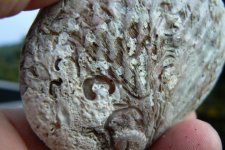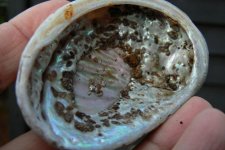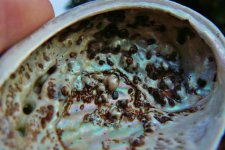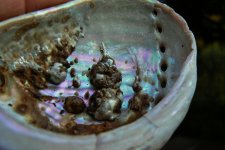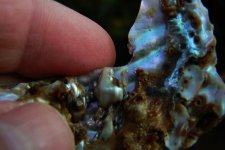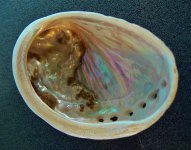
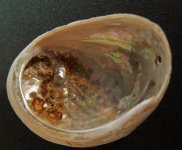
Haliotis Australis with natural blister pearls.I walk the beach regularly with my dog and keep an eye out for unusual shell formations. These are some of the finds, a New Zealand Paua(Abalaone) shell with a natural blister pearl formation, this species is not the one normally associated with New Zealand, Paua(Abalone) Haliotis iris is the darker greener bigger one that people know better. This one is a rarer, smaller and more white towards the pink colors.
I have only cleaned them with a toothbrush so far and will work on them in the future to get them cleaned up.
I have not found any literature of pearl formation in that species so far and welcome any input of information.

